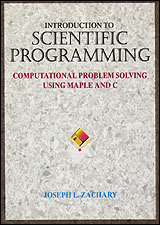Numerical Integration Tutorial
In this tutorial we will explore the rectangular and trapezoidal methods
for numerical integration that are discussed in Chapter 15.
Simulation
We will be using a graphical simulation of numerical integration
methods throughout this tutorial. You can start it by clicking on the
following button.
The simulation window that appears will display a graph with the x-
and y-axes in blue and a function in red. In the initial display, the
function will be sin(x).
There will also be a pair of vertical white lines at either end of the
graph, which represent the limits of integration. In the initial
display, the limits will be at -7 and 7.
The problem is to find the area that lies between the red curve and
the x-axis and is bounded on either side by the white lines. The
simulation can determine the area analytically, and the area is
displayed as the "Actual Value" toward the bottom of the simulation
window. Notice that this area is zero. This is because area that
lies beneath the x-axis is treated as "negative" area and, in the case
of sin(x), exactly cancels out the "positive" area above the x-axis.
You can use the mouse to drag the two limit lines back and forth. As
you do so, the calculated area will change.
Now use the Method menu to select the rectangular method.
Ten green rectangles will be superimposed on the graph. The areas of
these rectangles can be calculated and summed to obtain an
approximation to the area between the curve and the x-axis. The
actual value, the calculated value, and the difference between them
will be displayed at the bottom of the simulation window.
You can use the control beneath the graph to change the number of
rectangles being used. Notice that as the number of rectangles
increases, the amount of error tends to decrease.
Experiment with using the rectangular method to approximate the area
beneath the graphs of several different functions. You can use the
Function menu to choose new functions.
Also experiment with using either the midpoint or the trapezoidal
method to perform the same approximations. You can use the
Method menu to choose a new method. How do the three methods
compare with each other?
Last modified 21Nov96.
